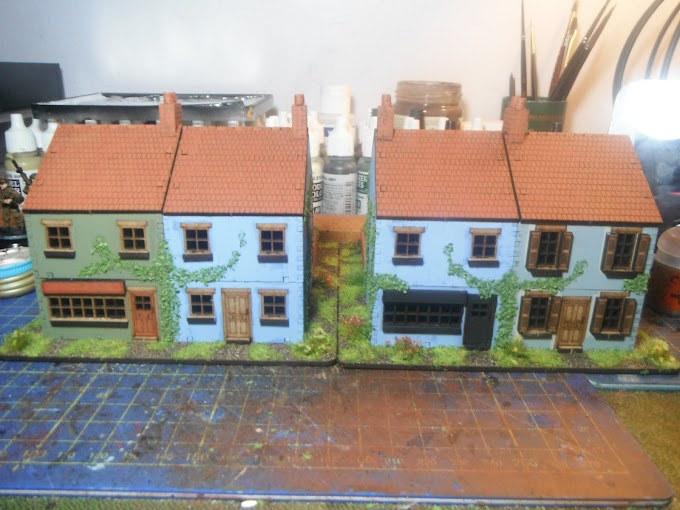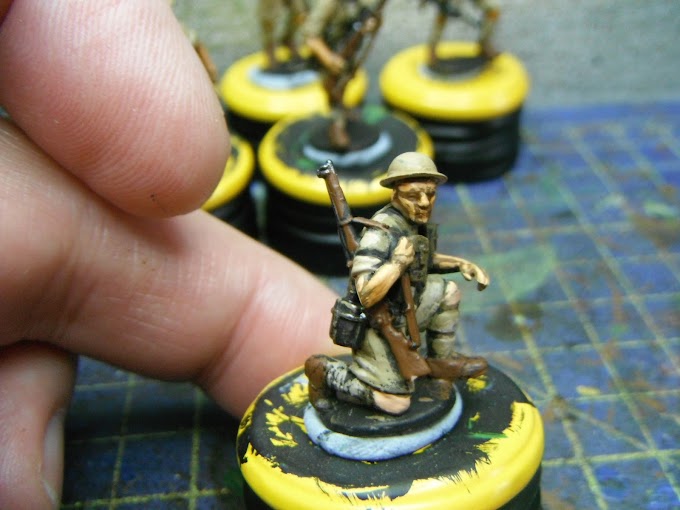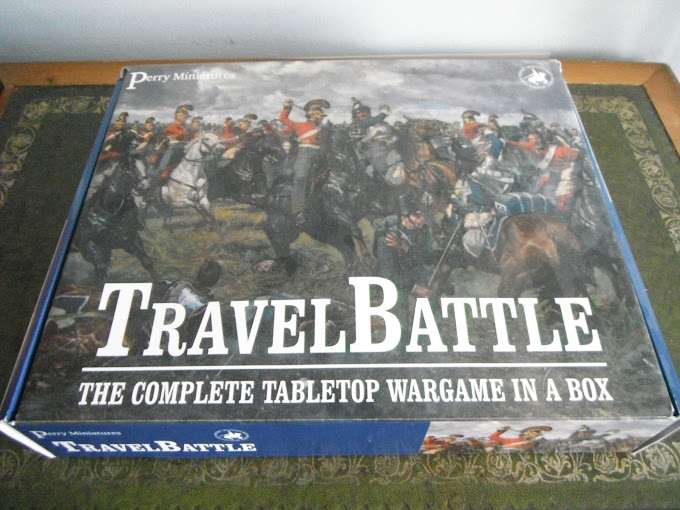To begin with the grid itself, I should emphasise that my plan was/is to make the table look as grid free as possible by only dotting in the corners, and then in a way that is barely visible to the eye. Whilst I know that grid games work for me and have done for many years now, I do believe that a more conventional terrain layout is what I'm looking for this time round. Back in 2012 when I was playing Commands & Colours Napoleonics with 6mm figures on a 3 ' x 4' table I tried to do the same thing, at least with the basic bare board. I think I got close to achieving what I was looking for, but of course there was no way of 'disguising' all of the terrain features that were built upon hexes, especially the hills, but I'm sure that with a square grid, very subtly marked out I can do even better this time. So what is the point of using a grid if I want to try to hide it? It's because I can't get my brain around grid free games these days, they just work for me, but as 'Norm' pointed out, beautiful they are not.
Here are a couple of images of my 2012 C&C set up to illustrate the method I used to try to blend in the actual hexes, it took a lot of work to get it to look like that, this time I have a different method in mind.
 |
| Terrain features aside you have to look hard to see the dotted hex pattern. |
 |
| You can just make it out here. |
 |
| I think this illustrates what I have in mind for the new playing surface. |
Norm made a good point about the narrow depth of my infantry groups being only 50mm for the two ranks being quite wasteful in terms of table depth, but I want to be able to represent terrain features such as roads, rivers, woods, fields etc and especially buildings so the depth allows me to do this. Even with cavalry being 70mm deep it still allows depth for terrain features to be placed around them, if I were to double the cavalry to eight figures in two ranks it would leave no room for buildings sadly. This is the big compromise of using grids.
Ross Mac made a very good point about British infantry forming square, and of course one can't have a series of companies forming squares! So I guess this kind of decides the fact that what goes into one of my grids is going to have to represent a battalion at least, I can live with that. This means command bases will be at Brigade level, again something I can live with.
I have also had interesting discussion via email with David Crook, who is also working on grid based wargames ideas, and many of the points made have been absorbed into my plans. Conrad Kinch also kindly sent me a set of grid based rules he has been working on, and as one might imagine they are written in his usual humorous style and are a very good set of rules I could see myself using. What is clear to me is that there remains lots of options for using grids in wargames, my next stage is to get the table painted up and dotted out so I can illustrate some of these points raised above.
On the figure painting front I'm taking a short break from the infantry to paint a squadron of eight British Heavy Dragoons, the first four of which are assembled and undercoated as you can see. These are lovely chunky Sash & Sabre castings, and unlike the Light Dragoons the arms are cast on and only the sword hands need to fitted into the drilled out sockets. The bicorne heads are sculpted at slightly different angles which adds character to the soldiers. Should have these finished for next weeks update, I'm really forward to starting them. They will also eventually form a sixteen figure unit. In the pipeline I have French Line Chassuer a Cheval and also Cuirassiers - only the one unit in the Pensinsular I know, and wearing somewhat drab brown coats, but you gotta have some cuirassiers! I also have plans for a British Light Infantry battalion, so plenty of enthusiasm going forward.












0 Comments